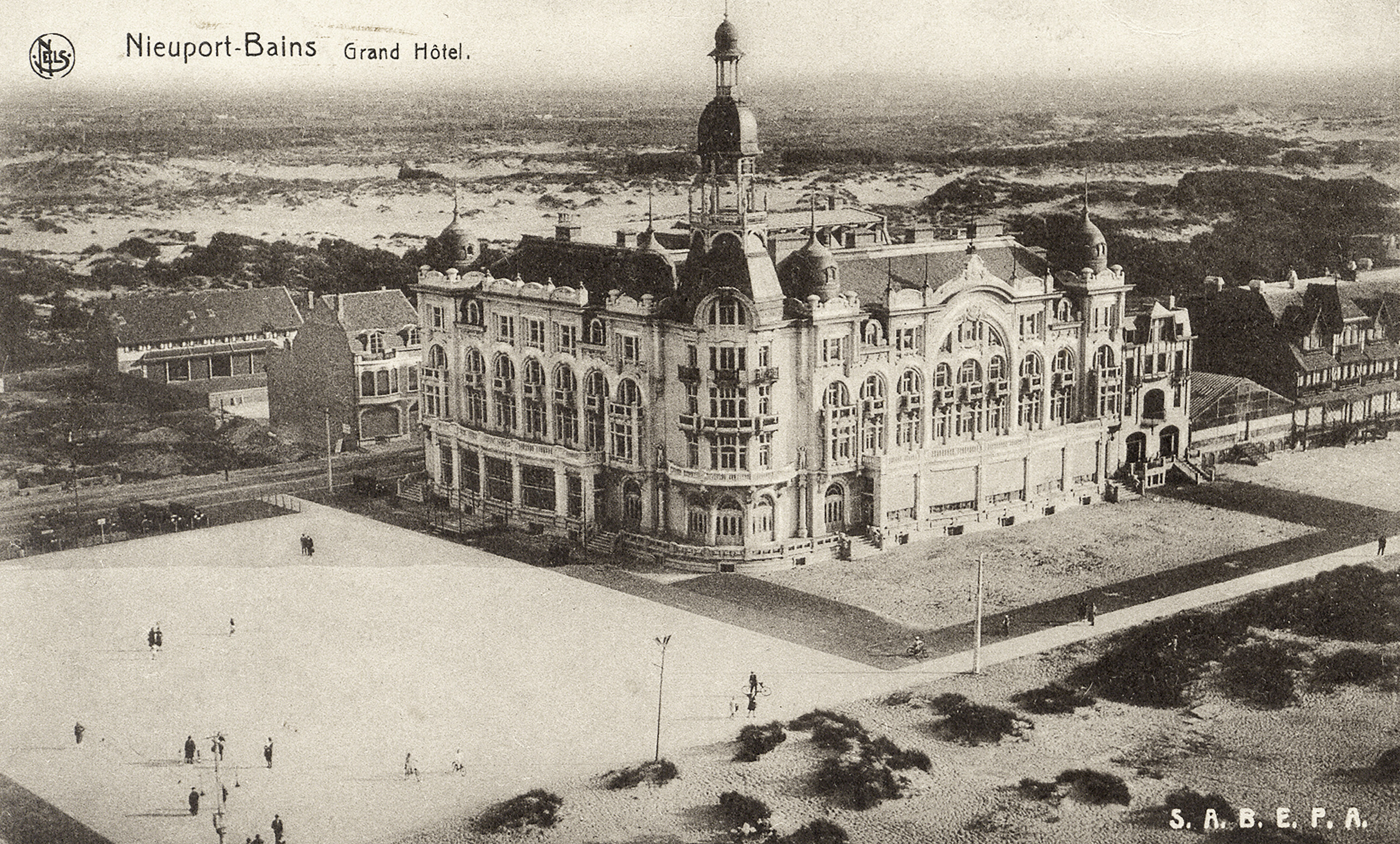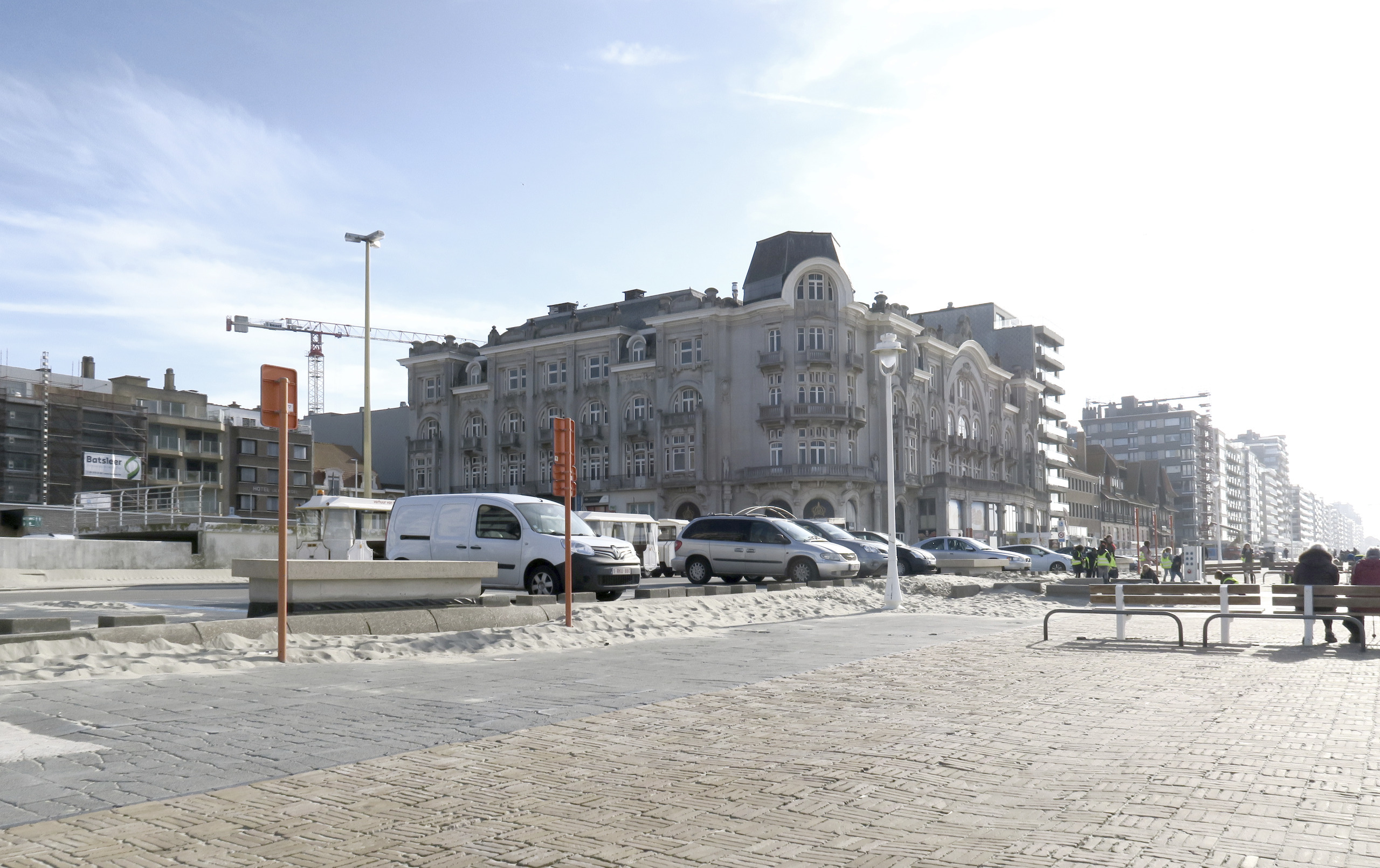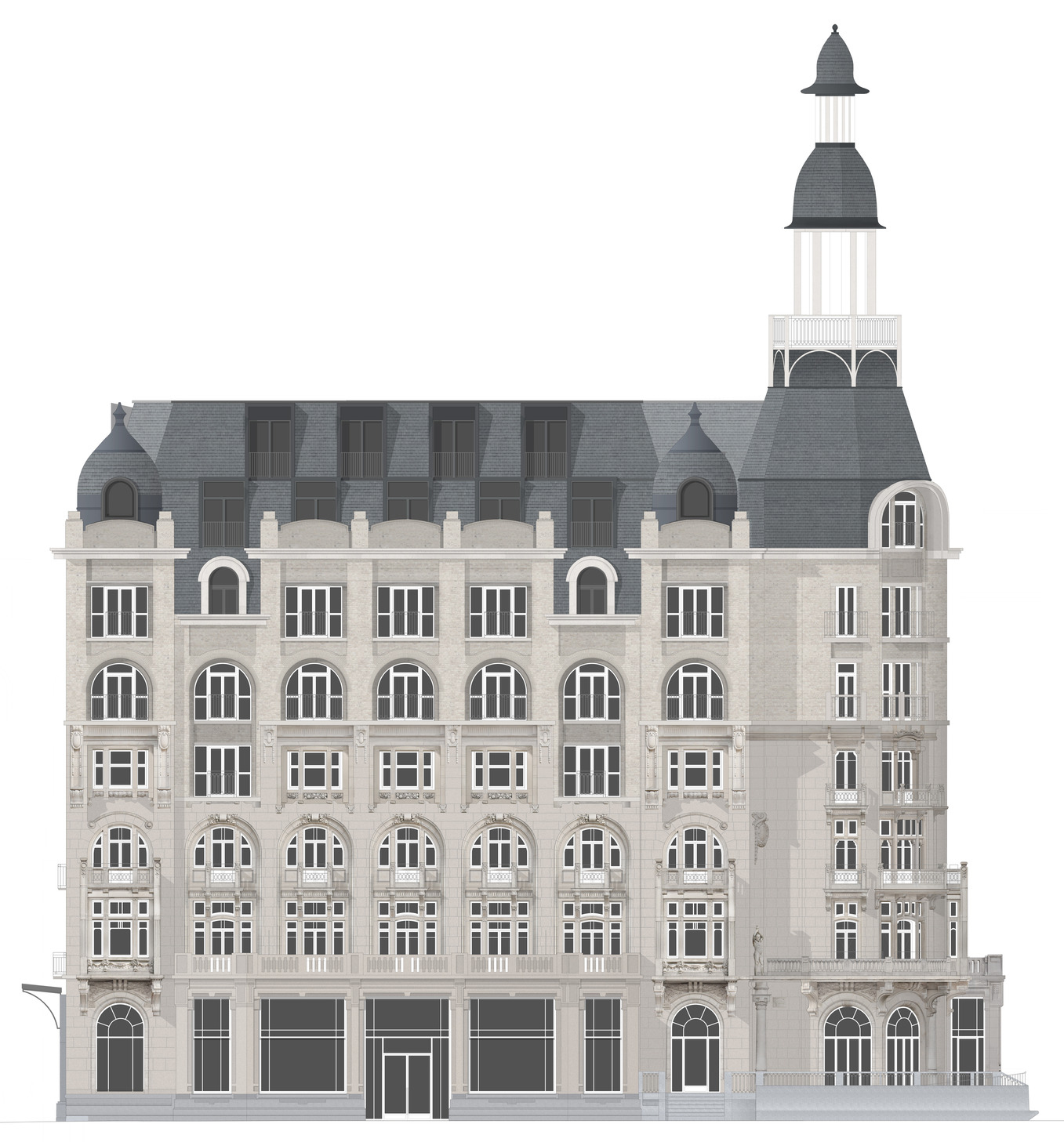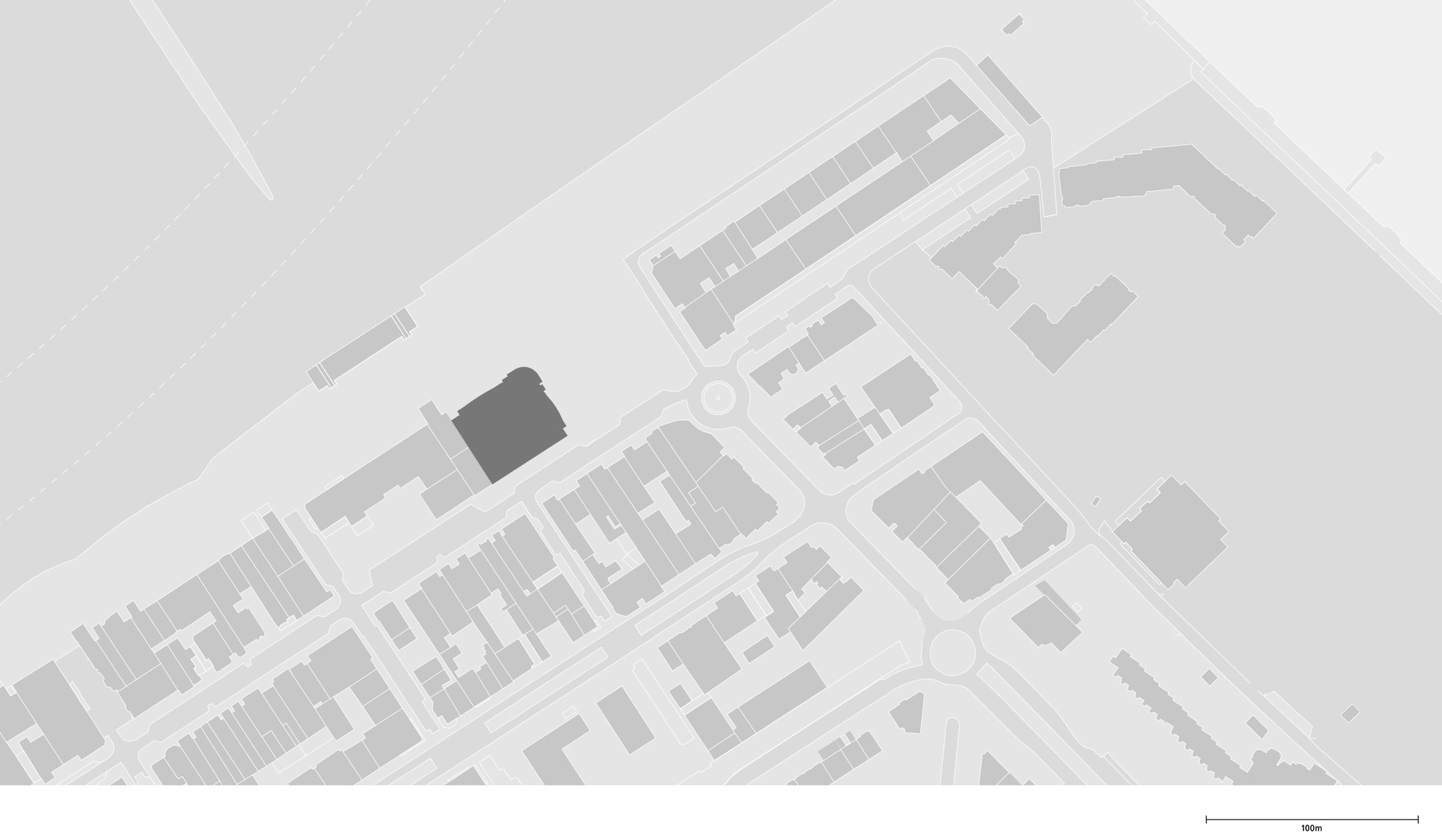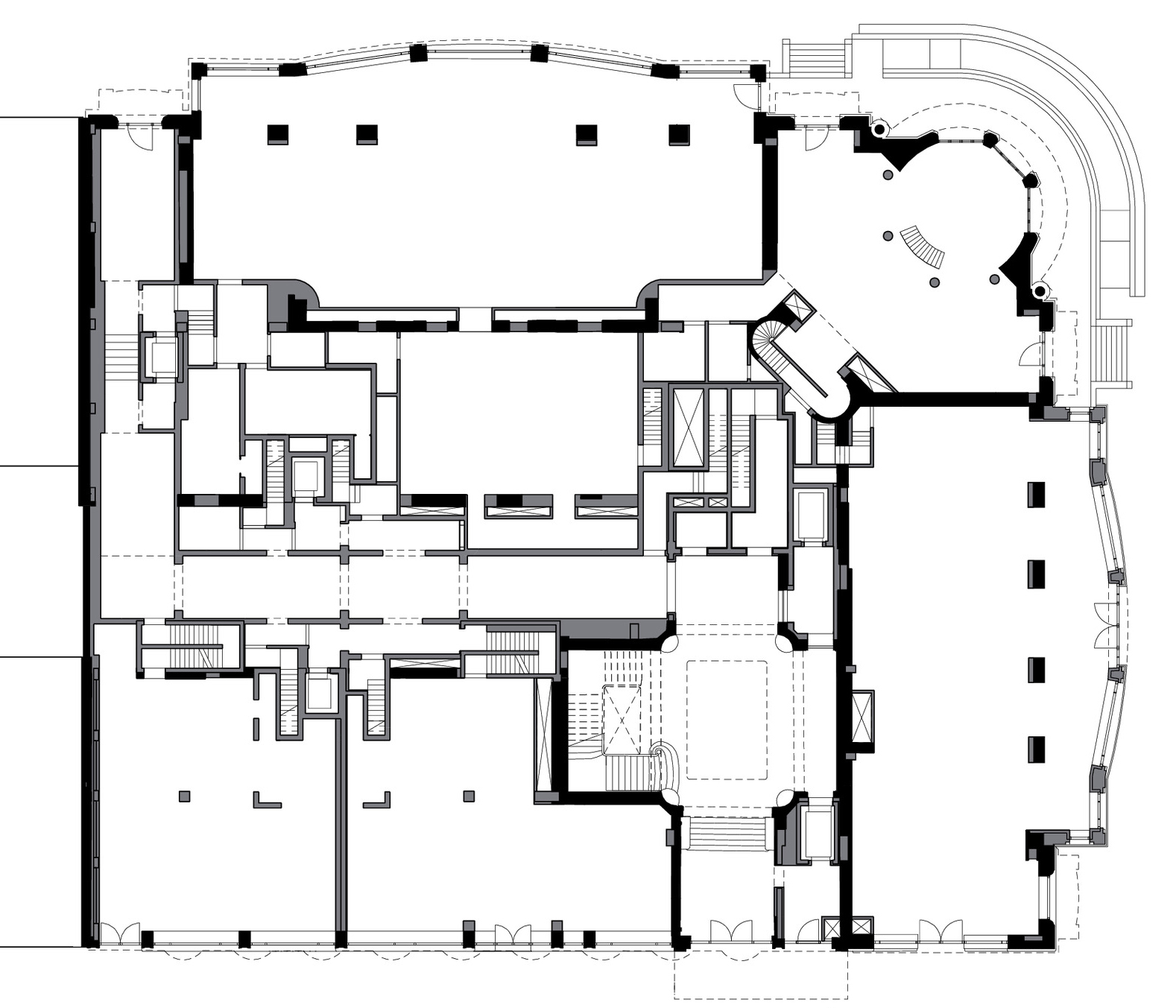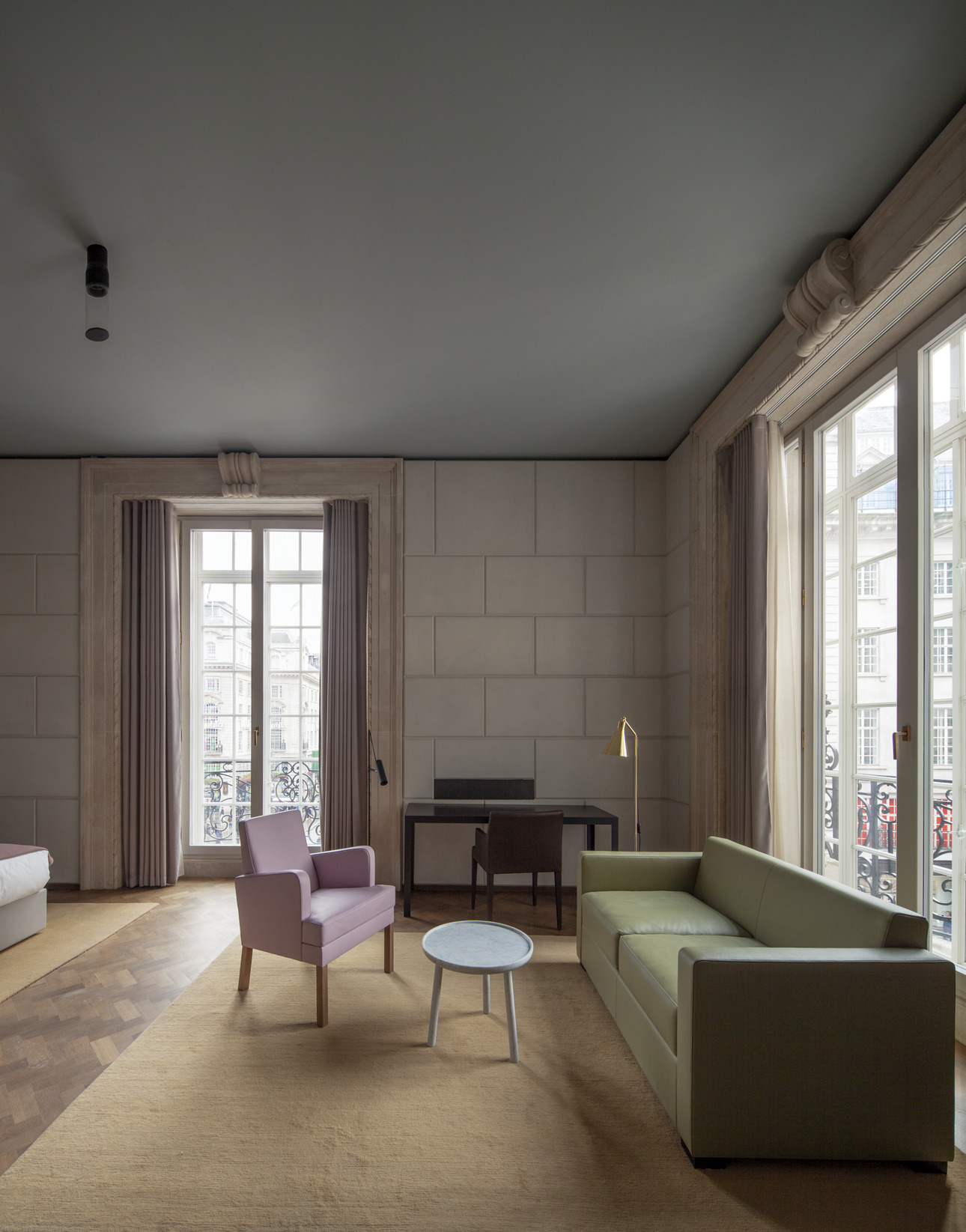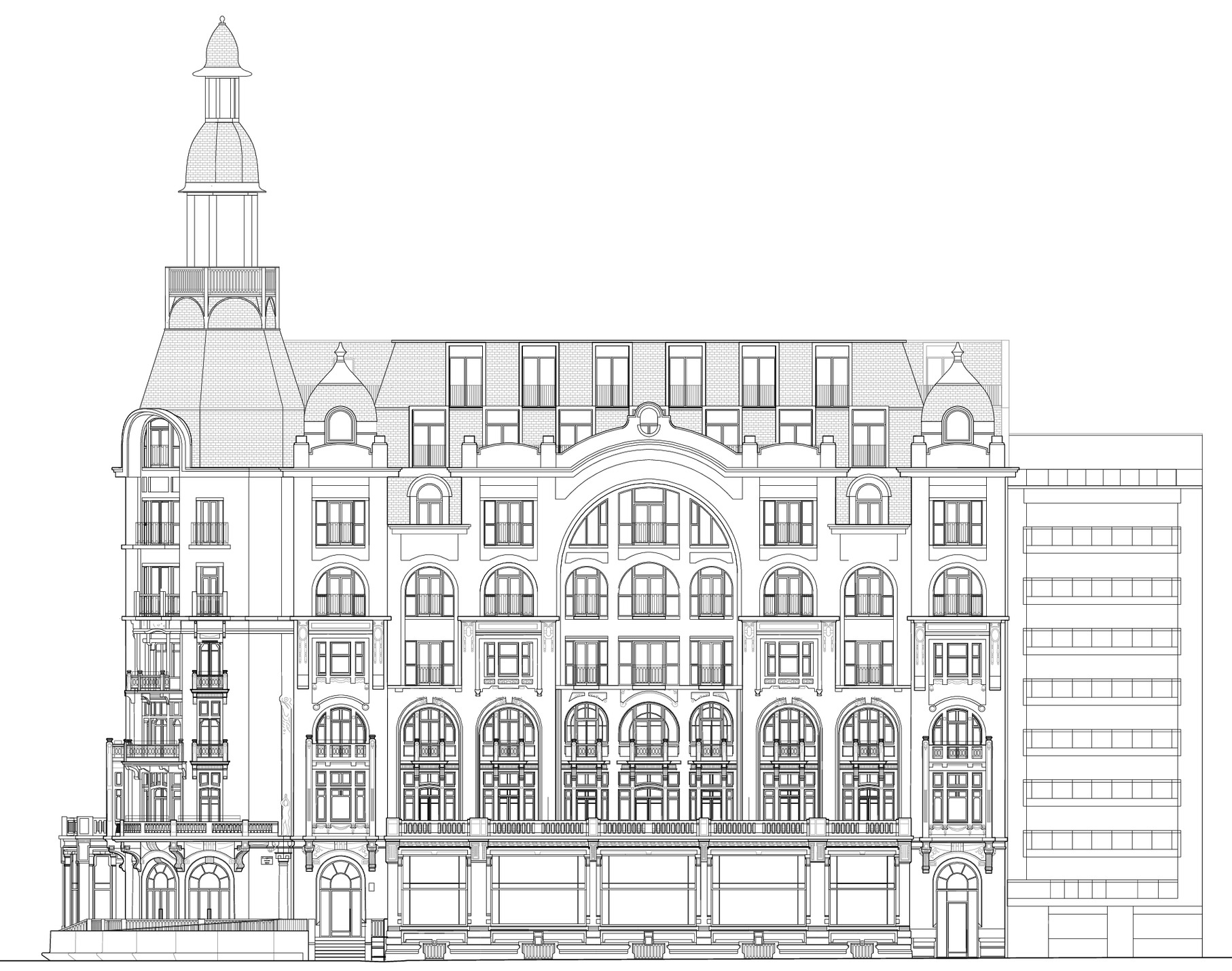The Grand residential building
Nieuwpoort, Belgium
2019–
The former Grand Hotel was designed by Belgian architect Apollon Lagache in 1924 for the seaside resort of Nieuwpoort Bad, which had grown popular in the late nineteenth century. As the city grew up around it, the building itself deteriorated. Substantial war damage compounded by piecemeal modifications including the demolition of some of the building’s towers and turrets compromised its appearance, status and silhouette. The building was most recently used as holiday apartments but has been vacant since 2018. The project seeks to restore the building to its former grandeur through its restoration and sensitive vertical extension. The upper levels of the building will house apartments while a restaurant, bar and shops reconnect it to the surrounding public realm at ground level.
The project looks to the history of The Grand Hotel, caring for its distinctive qualities while understanding the needs for it to survive into the future. The surviving historic fabric will be carefully restored, such as the entrance and the original façade features. The graceful bays and terraces that were an extension of the public space along with the Grand public rooms that were destroyed and filled in during the 1950s will be reinstated. The apartments, situated on the upper floors, will be respectful to the original structure of the hotel. Lost elements, such as the tower and the domes, will be reinstated, drawing inspiration from the playful original design.
The building will grow in scale with an additional four storeys to regain its status as a landmark on the Nieuwpoort beachfront. The building itself retains much of its decorative façade (which was granted protection status in 1981) and so the extension requires a sensitive understanding of heritage value and entails reinterpretation and invention as well as restoration. The new design does not seek to impose a style or signature to the building, nor does it try to create a contrast between the historic fabric and its new additions. In this respect it can be seen as part of a largely forgotten tradition of adapting and extending historic buildings; engaging directly with the original fabric to allow a nuanced reading of the building’s history.
Data and credits
- Project start
- 2019
- Construction start
- 2023
- Completion due
- 2025
- Gross floor area
- 15,100m²
- Client
- VDD Project Development
- Architect
- David Chipperfield Architects London
- Partners
- Benito Blanco, Billy Prendergast
- Project architect
- Joe Hewlett
- Project team
- Alexander Hill, Annebe Brouwer, Katherine Nolan, Judi Diab, Ricardo Alvarez, Aurora Montero, Tram Huong Ngo, Tom Herre, Isabel de Azevedo, Ines Gavelli, Cathal Crumley, Anahita Brahmbhatt, Lydia Liu, Mattias Kunz
- Local architect
- Bureau Bouwtechniek
- Restoration architect
- Origin Architecture & Engineering
- Interior designer
- Arjaan De Feyter
- General contractor
- Verstraete Team
- Structural engineer
- Mouton
- Services engineer
- HP Engineers
- Acoustic consultant
- Macobo-Stabo Construction Engineers

